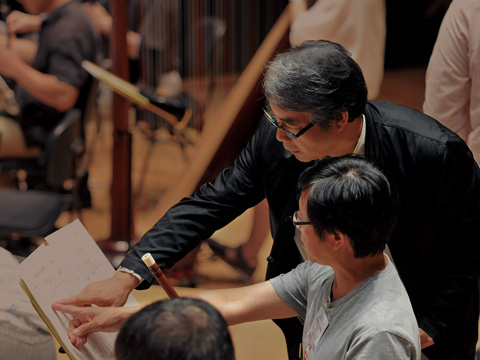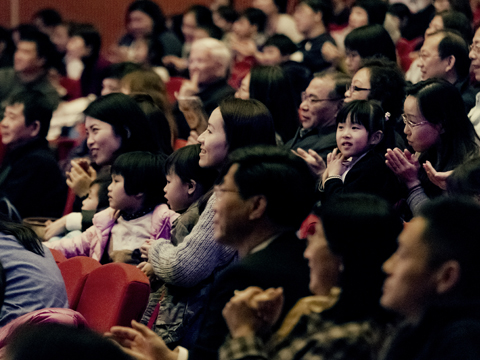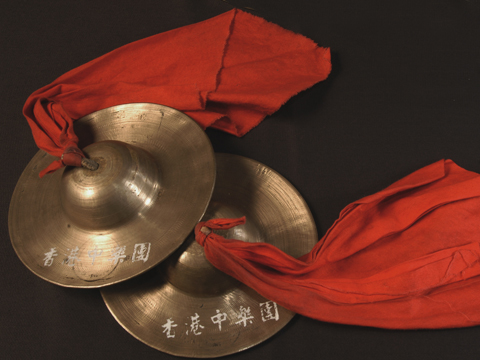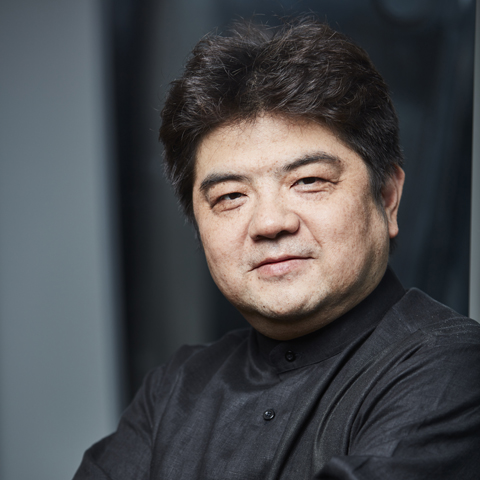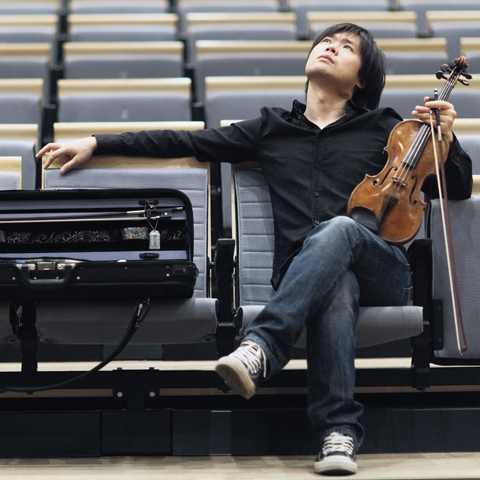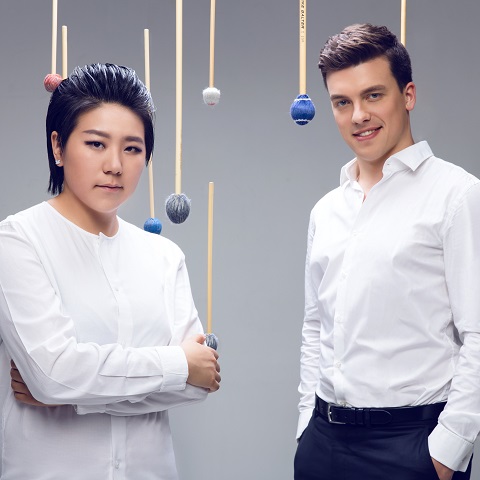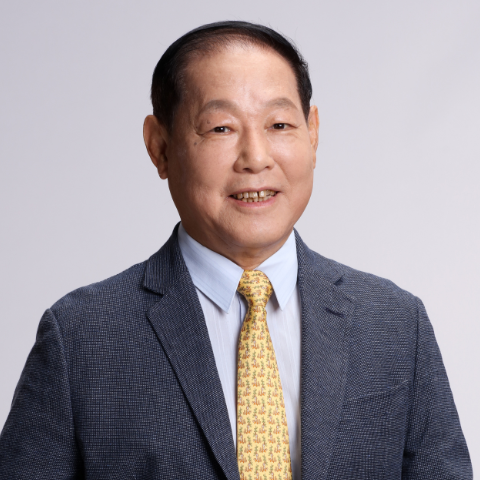
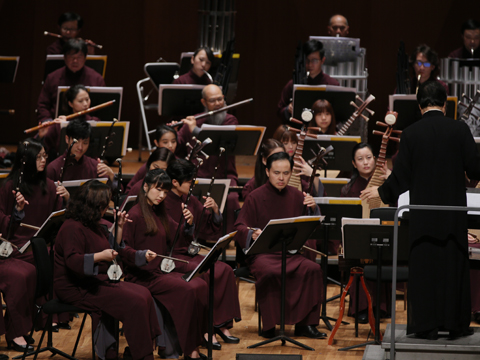
HKCO
Hong Kong Chinese Orchestra Environmental, Social and Governance Artistic Director and Principal Conductor for Life Orchestra Members Council Advisors & Artistic Advisors Council Members Management Team Vacancy Contact Us (Tel: 3185 1600)

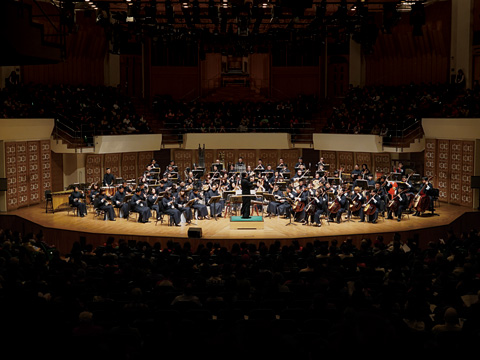
Concerts

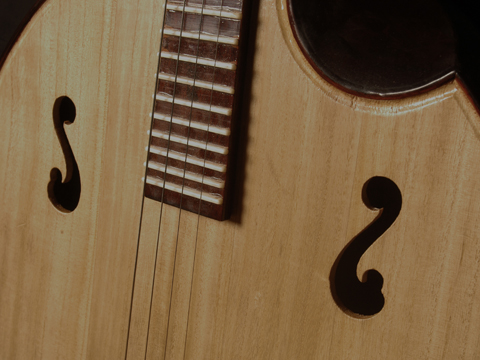
Education
The HKCO Orchestral Academy Hong Kong Youth Zheng Ensemble Hong Kong Young Chinese Orchestra Music Courses Chinese Music Conducting 賽馬會中國音樂教育及推廣計劃 Chinese Music Talent Training Scheme HKJC Chinese Music 360 The International Drum Graded Exam

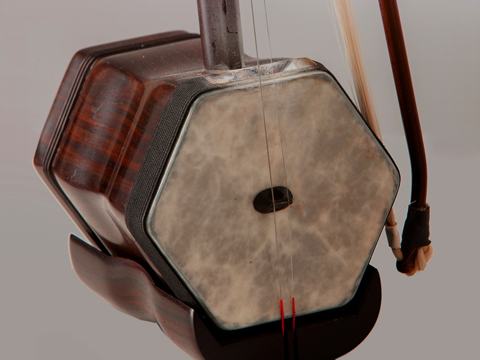
Instrument R&D
Eco-Huqins Chinese Instruments Standard Orchestra Instrument Range Chart and Page Format of the Full Score Configuration of the Orchestra
43rd Orchestral Season
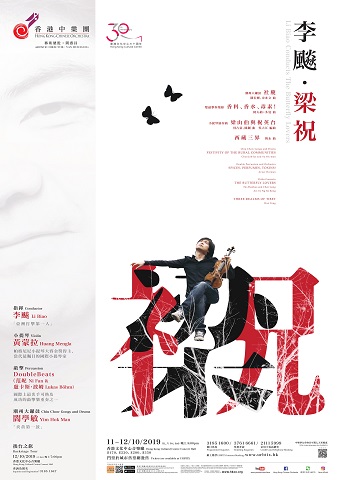
Li Biao Conducts The Butterfly Lovers
Percussion: DoubleBeats (Ni Fan, Lukas Böhm)
On the Drum: Yim Hok Man
URBTIX: http://www.urbtix.hk/internet/eventDetail/38897
POPTICKET: https://www.popticket.hk/event/li-biao
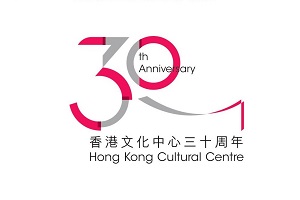
Hailed as the “Number One Percussionist” of Asia, Li Biao changes his mallets for the baton to conduct the Hong Kong Chinese Orchestra!
Sharing the concert stage with him will be the DoubleBeats duo, formed by renowned young Chinese percussionist Ni Fan and German percussionist Lukas Böhm, who will make magical sounds with innovative techniques; Huang Mengla, winner of the First Prize at the Paganini International Violin Competition and an eye-catching violinist of international repute, will play the tragic love story of The Butterfly Lovers on his strings; and the premier Chinese drummer Yim Hok Man, who will play the Chiu Chow Gongs and Drums to showcase the charm of this powerful instrument. Such a strong line-up of virtuosi promises to make the occasion a musical feast too rare to miss!
On the Drum: Yim Hok Man
Double Percussion and Orchestra Spices, Perfumes, Toxins! Avner Dorman Arr. by Alfred Wong (Arrangement commissioned by the HKCO / World Premiere of the Chinese Orchestral Version)
Percussion: DoubleBeats (Ni Fan, Lukas Böhm)
Violin Concerto The Butterfly Lovers He Zhanhao and Chen Gang Arr. by Ng Tai Kong
Violin: Huang Mengla
Encore Piece
William Tell•Overture Gioachino Rossini Adapted by Tan Kah Yong
12/10/2019 (Sat) 7:00pm
Hong Kong Cultural Centre Concert Hall
Inquiries and Registration: 3185 1647
60th Year on and the Enduring Butterfly Lovers Takes on an International Mantle
Chow Fan Fu
Although this concert is not solely dedicated to the 60th anniversary of He Zhanhao and Chen Gang’s violin concerto The Butterfly Lovers, this masterpiece, with its enduring popularity and increasing international clout, will most likely stand out as its highlight.
Easy to understand and appreciate
The other three works in this concert all have their own unique character and charm and show their respective cultural bearings. The opening number Festivity of the Rural Communities by Chan Joh-fai and Yu Yik-man uses musical features from Chiu Chow music, with Chiu Chow gongs and drums showcasing the folk music culture of southern China. Three Realms of Tibet by Han Yong uses the Yin Yang Composition Method, a technique that he has created, which uses elements of Tibetan folk music to create sounds with a modern feel to portray the communion between Man and Spirit, communication between Man and Nature, and love and harmony among mankind. A spiritual work inspired by culture on the faraway Tibetan Plateau in the northwest, it is in sharp contrast to the Festivities of the Rural Communities which depicts festive celebrations of the general populace.
The percussion duo DoubleBeats comprising renowned young Chinese percussionist Ni Fan and contemporary German percussionist Lukas Böhm, will perform Spices, Perfumes, Toxins! for double percussion and orchestra by Avner Dorman. This piece combines music for various percussionist instruments such as the Darbuka, the drum kit and the symphony orchestra to create a kind of music that straddles many music cultures. Like The Butterfly Lovers, the version used for this performance is adapted for the Chinese orchestra from the original symphony orchestra, a clear manifestation of a cultural fusion approach.
A common trait that runs through the four works is that although they are different in content, source material, culture and approach, they are all easy to understand. Yet, The Butterfly Lovers undoubtedly stands out as the one that resonates most with the audience.
A Chinese cultural symbol
When one examines the line of development of violin concerto The Butterfly Lovers since its birth sixty years ago, it is not difficult to trace its path of success — from its spontaneous appeal to audiences at home and abroad, to the present when its “enduring” and “international” status is becoming ever more pronounced.
The Butterfly Lovers was premiered on 27 May 1959 in Shanghai to celebrate the 10th anniversary of the founding of the People’s Republic of China. Chen Gang, one of the composers, has publicly claimed that The Butterfly Lovers has become a Chinese cultural symbol. Considered together with He Zhanhao’s repeated emphasis that “the success of Butterfly Lovers is built mainly upon the foundation of Chinese folk music”, this symbol underscores the use of the violin in “adopting Western means to Chinese ends” and the violin sinicization movement at the time of its birth sixty years ago. This also gave rise to the ensuing artistic trends of “sinicization” and “Western means for Chinese ends” advocated by arts circles in China.
On an artistic level, The Butterfly Lovers “merely” adopted Western techniques to merge with features of Chinese yueju traditional drama and musical features and presentation techniques of Jiangnan music. This fusion is of course a far cry from contemporary cross-over genres; some of its techniques can even be deemed conservative and immature, but still able to express a kind of Chinese sentiment and spirit; and it is the latter that is most important in making The Butterfly Lovers a “Chinese cultural symbol”.
Simple and direct appeal
The musical inspiration of The Butterfly Lovers came from its namesake yueju traditional drama of the Jiangsu-Zhejiang region. A soft murmuring singing style from the drama forms the fundamental phrasing structure of the theme melody, which also serves as the basis of development for the concerto. The theme melody is highly cantabile, its style sweet and tender, which makes the tragic love story and family conflicts all the more touching. This musical element is crucial for the success of The Butterfly Lovers in the sinicization of the violin.
Since its music elements are drawn from the sweet melodies of Yue Opera, The Butterfly Lovers naturally strikes a chord with Chinese audiences (or foreign audiences for that matter) who are partial to mellifluence in their appreciation of music. It has added Chinese elements to Western composition techniques to first explore a path of “sinicization”, and second to express a kind of Chinese sentiment and spirit to appeal to Chinese compatriots. It can easily touch audiences and create rapport even now when the political situation is so much more complex, let alone in those unique political times.
More important is the simple and direct compositional approach adopted to recount the story of The Butterfly Lovers. If one deconstructs the entire work in terms of music theory, it is easy to see that the material used for composing this work is clear and simple; the entire piece develops along repeating similar themes without too much expansion. In terms of instrumentation harmony and structure, there is none of the symphonization of large-scale Western concertos. The simpler sonata format is used, and the musical approach is akin to a third-party narrator. The story is also told more from the female angle of Zhu Yingtai, with more detailed depiction of her thoughts and feelings. The main events of the original Butterfly Lovers storyline — Sworn Brotherhood, Yingtai Resists Marriage and Transforming into Butterflies form the introduction, development and recapitulation parts respectively. As the story is well-loved and popular with Chinese audiences, it is therefore not difficult for them to match the storyline with the development of the music which virtually “tells” the story: Jiangnan Spring, Sworn Brotherhood, Studying Together, Falling in Love, Bidding Farewell, Resisting Marriage, Meeting in the Pavilion, Shanbo Vomiting Blood, Throwing Herself in the Grave and Transforming into Butterflies. The variations on the main theme, albeit similar, actually enhance progressively the musical impact.
The Light of humanity and the blossoms of love
At the time of the work’s inception, the two composers were young men innocent of any real-life love tragedies. What they wanted to invoke from the music was merely “the spirit of humanity and the blossoms of love”, which was probably why they could produce a work of true feelings and great purity. The familiar plot of the folk tale The Butterfly Lovers — an adorable couple’s fight against feudal constraints ending in death and their legendary transformation into butterflies – together with tender, loving and harmonious music, combined to yield a work infused with Chinese characteristics and sentiments.
Love is, and has always been, one of the greatest and eternal emotions of man. The love as expressed in the unique music of The Butterfly Lovers with its Chinese characteristics and feelings is especially intense in its eternal appeal. It is therefore not exaggerating to hail this concerto as being “eternal”.
International standing and eternal appeal
Although The butterfly Lovers has adopted various approaches typical of Chinese traditional drama, as well as certain performing techniques of Chinese musical instruments, and the emotions expressed are Chinese, an increasing number of non-Chinese violinists are mastering this work and taking it to the stage, which goes to show that the international standing of this work is becoming more evident.
In fact, soon after its premiere, The Butterfly Lovers already went “international”. On 5 October 1960, Cao Peng (1925 -), a Chinese conductor studying in the USSR, conducted this piece with the USSR State Radio Symphony Orchestra, the soloist being Boris Gladstone in the Pillar Hall of the House of the Unions in Moscow in celebration of the 10th anniversary of the founding of the People’s Republic of China. The Butterfly Lovers was touring Moscow soon after its premiere.
But for The Butterfly Lovers to truly gain a footing on the international music scene, it was thanks to the greater availability of high-end recording instruments in the 1970s and 1980s. An example was Japanese violinist Nishizaki Takako’s three recordings, which made her the most well-known foreign soloist of the work. Recently the number of foreign violinists to perform this work has been on the increase: apart from Akiko Suwanai, also a Japanese, others include Frenchman Augustin Dumay, the Jewish Gil Shanai and the American Joshua Bell.
One can say that The Butterfly Lovers is fast becoming a fixture on the international stage. It shows at least that the content and feelings of The Butterfly Lovers can actually break down national, ethnic and cultural barriers with the theme of love, declaring loud and clear the latter’s eternal thematic position. Today on its 60th birthday, this achievement may perhaps be the most fitting contemporary evaluation of The Butterfly Lovers.
Your Support
Friends of HKCO
Copyright © 2026 HKCO
